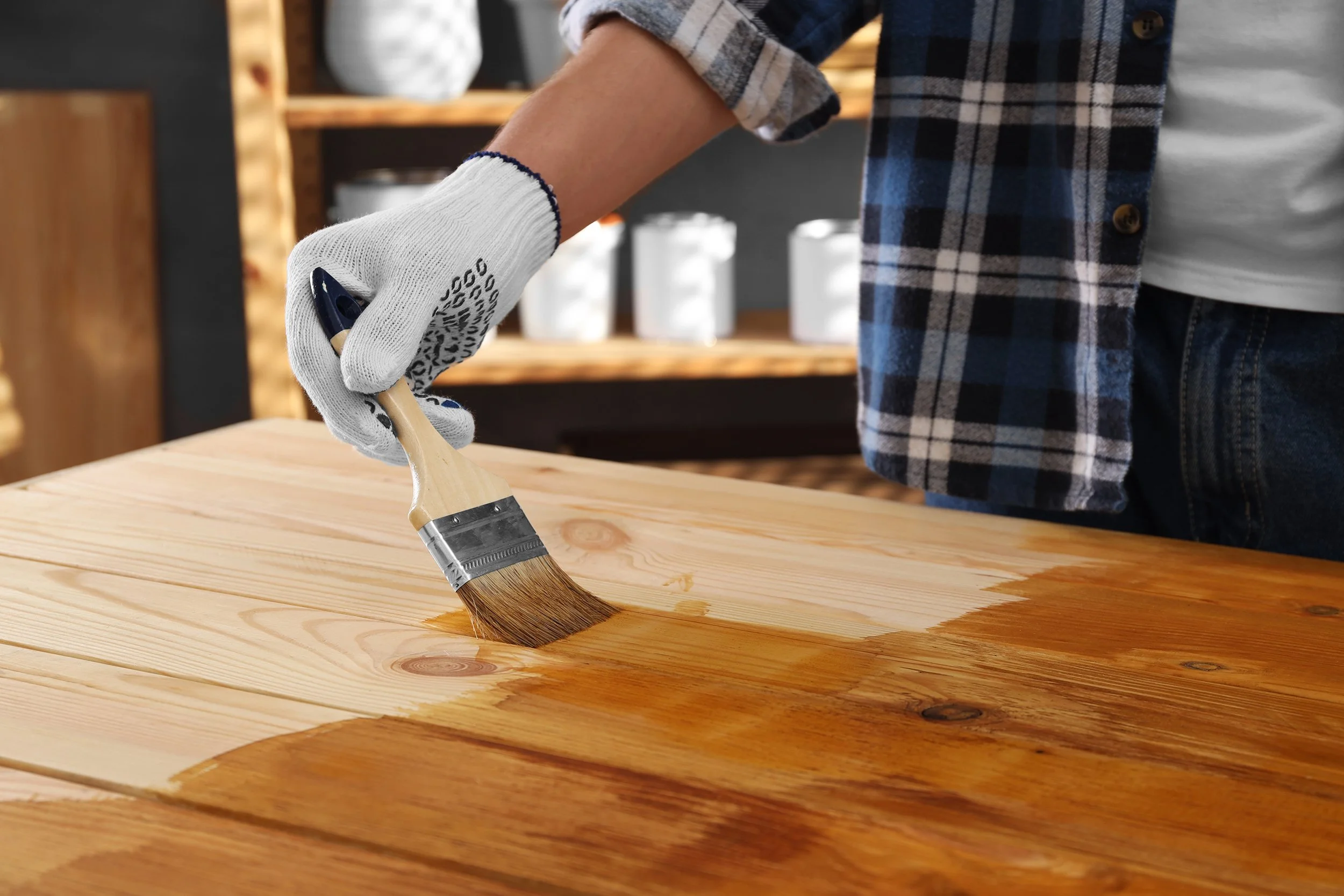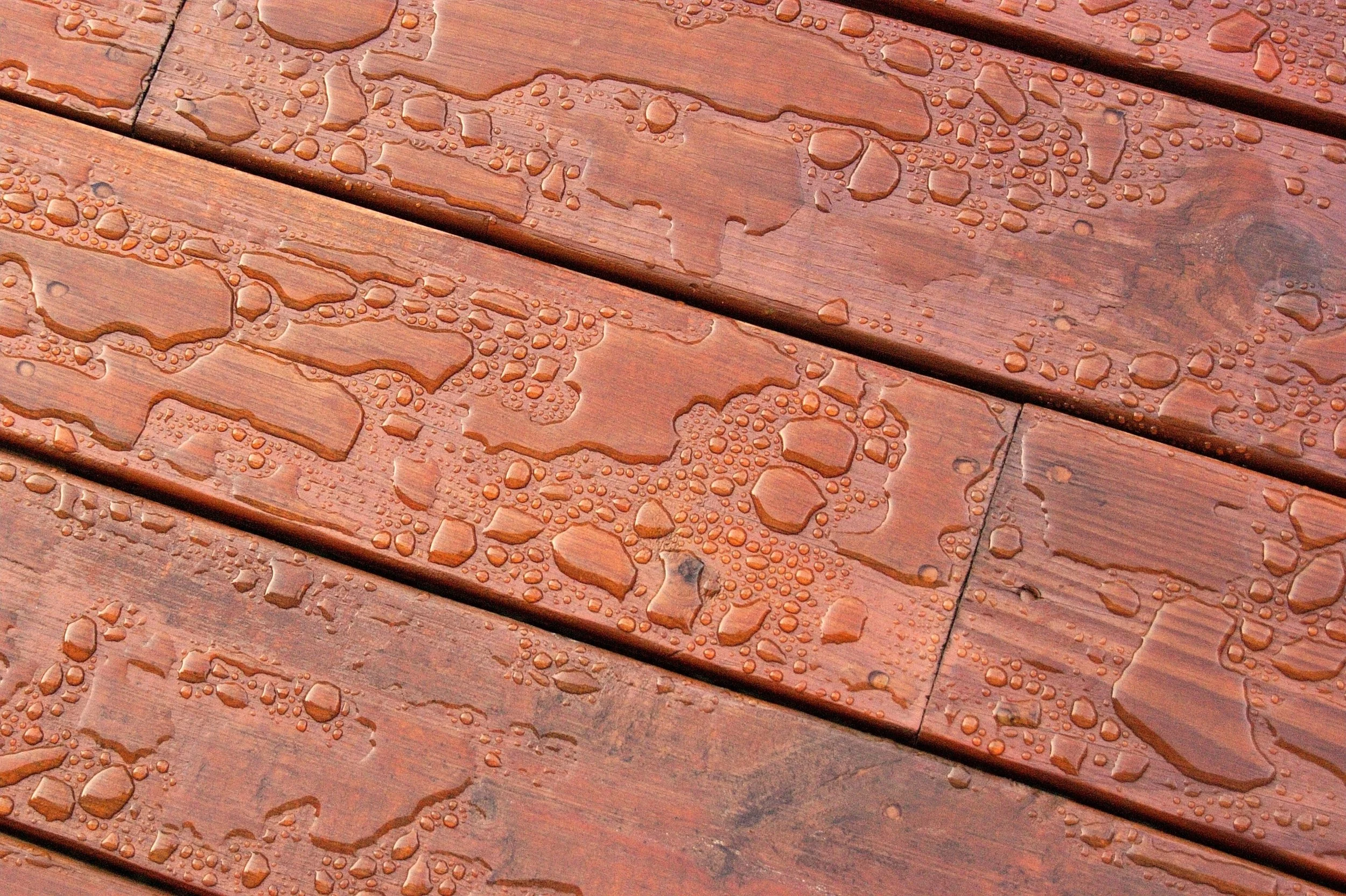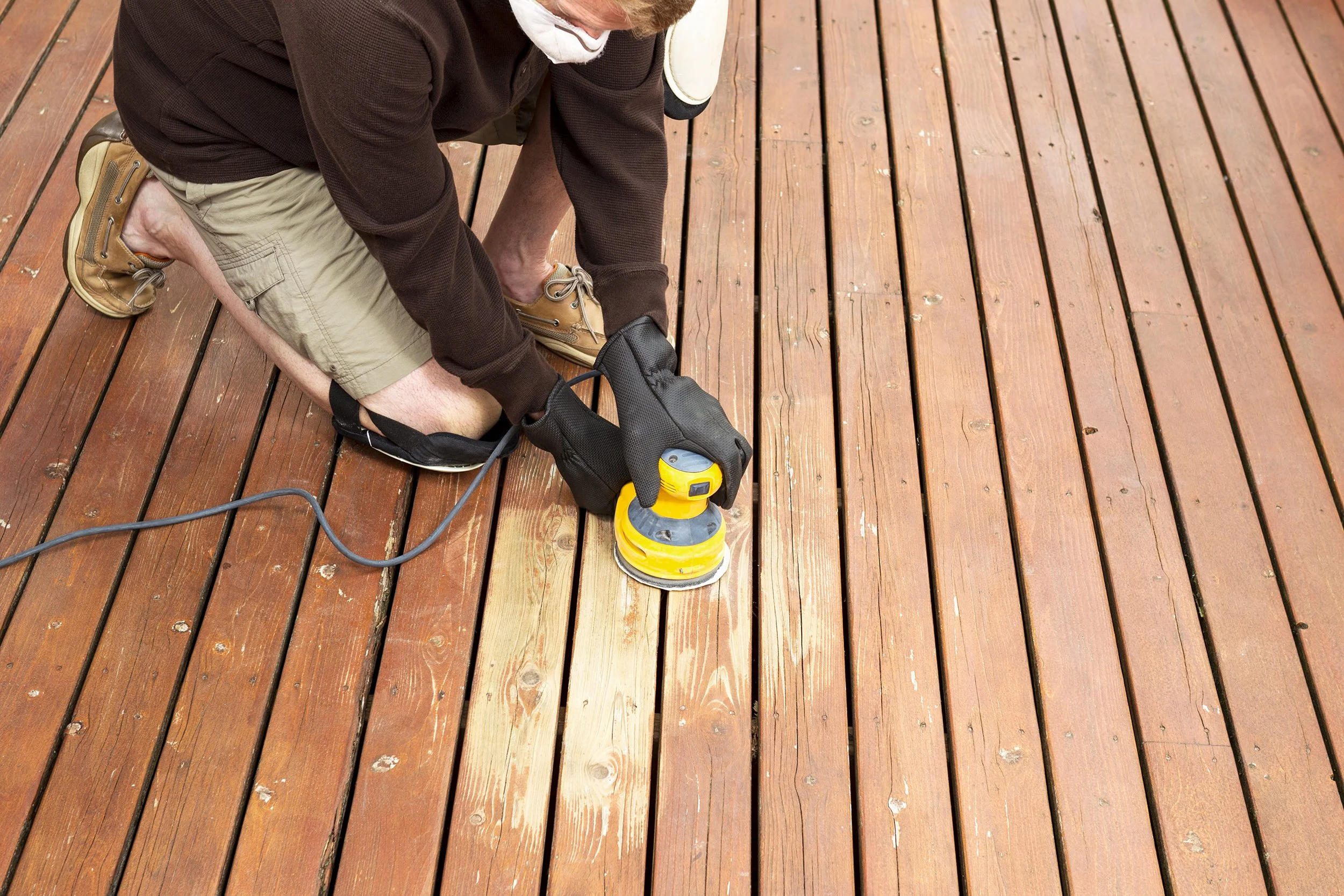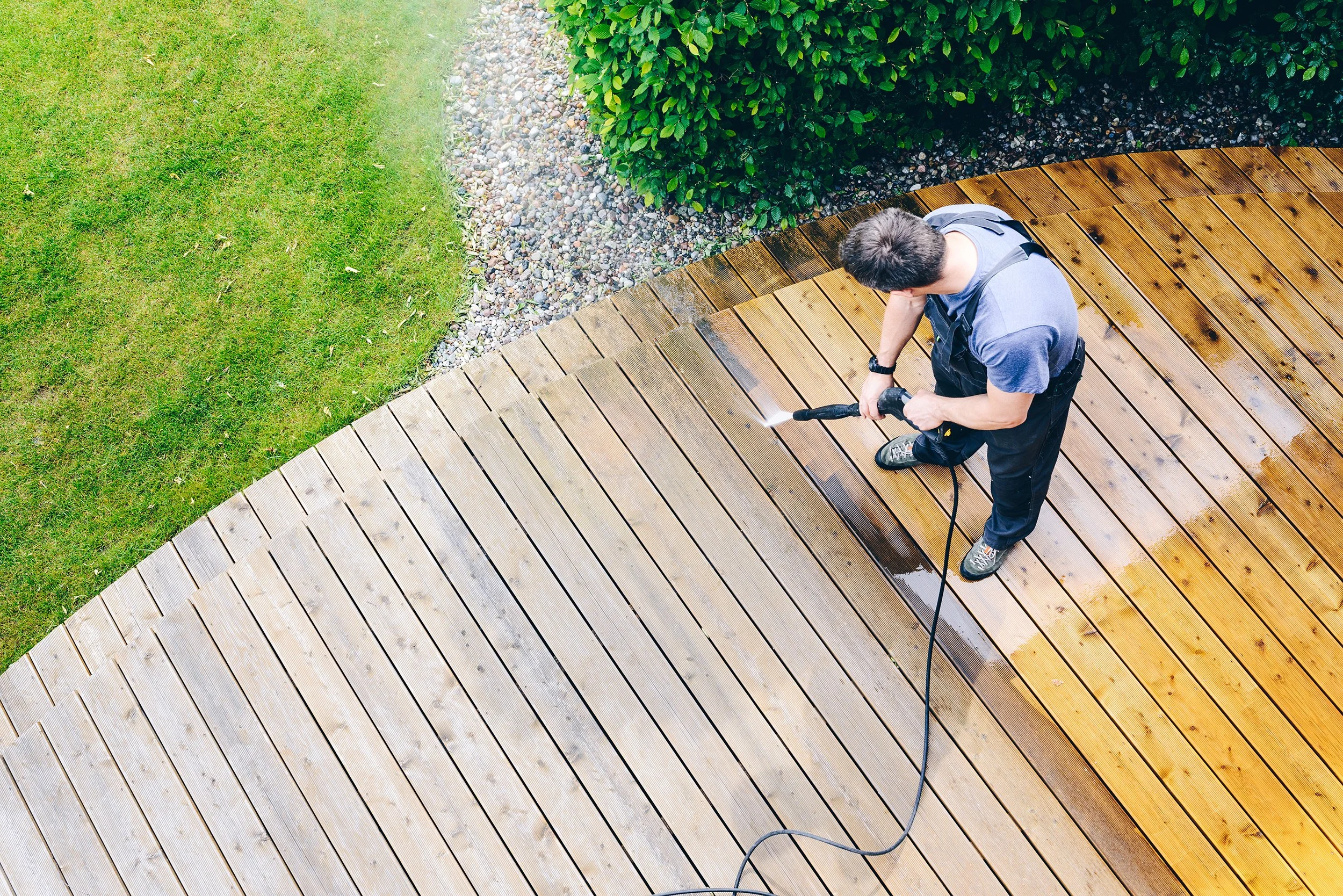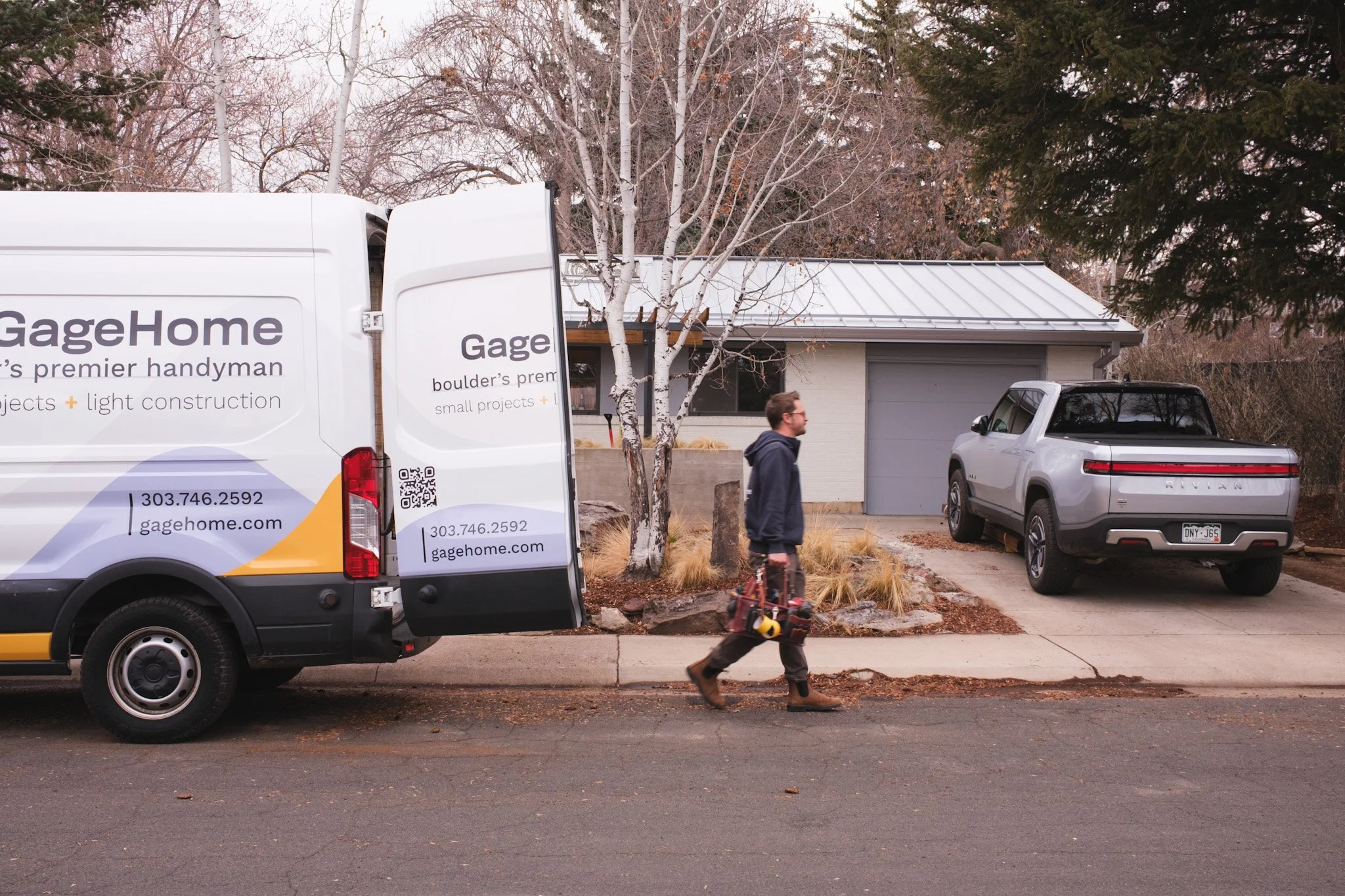How to Waterproof Wood: The Ultimate Guide to Deck, Fence, and Siding Protection
Because Mother Nature didn't get the memo about respecting your property lines
If you live in high-altitude climates like Boulder, you know the drill. One day you're admiring your pristine deck over morning coffee, and the next you're wondering if that gray, weathered wood is the same material you invested thousands in just a few years ago. Welcome to Colorado, where 300+ days of sunshine can turn your beautiful cedar into driftwood, and surprise hailstorms treat your fence like target practice.
Here's the reality: wood protection isn't optional in our climate—it's essential home maintenance. The good news? You don't have to surrender your outdoor structures to the elements. With the right waterproofing strategy, you can keep your deck, fence, and siding looking sharp and structurally sound for decades to come.
Why Boulder's Climate is Wood's Worst Enemy
Let's talk about what makes Colorado such a challenging place for outdoor wood. Our climate is essentially wood's personal torture chamber, complete with:
The Freeze-Thaw Cycle from Hell: Water gets into wood, freezes, expands, and creates micro-cracks. Then it thaws, and more water gets in. Rinse and repeat until your deck looks like it went ten rounds with a jackhammer.
UV Radiation That Would Make a Vampire Weep: At 5,400 feet above sea level, we're closer to the sun than most people. That means UV rays are hitting your wood structures with the intensity of a laser beam, breaking down the natural polymers that give wood its strength and color, turning your beautiful cedar into gray, weathered kindling.
Moisture Roulette: One day it's bone dry, the next we're getting dumped on by a surprise thunderstorm. Wood expands and contracts with moisture changes, and constant fluctuation weakens the cellular structure faster than you can say "home depot run."
Hail That Plays No Favorites: Colorado hail season doesn't discriminate. It'll dent your perfectly waterproofed deck and create entry points for water in about five minutes flat.
The Science Behind Wood Protection (Don't Worry, We'll Keep It Simple)
Before we dive into the how-to, let's understand what we're fighting against. Wood is essentially a collection of tiny straws bundled together. When water gets into these "straws," several things happen:
Rot Sets In: Fungi move in like unwelcome houseguests, eating away at the wood fibers and turning your solid structure into something with the structural integrity of wet cardboard.
Mold and Mildew Throw a Party: These microscopic troublemakers love damp wood. They'll set up shop and start reproducing faster than rabbits, creating health hazards and making your outdoor space look like it belongs in a horror movie.
Insects Get an All-You-Can-Eat Buffet: Termites, carpenter ants, and other wood-boring insects find wet, softened wood irresistible. It's like leaving a cake out for ants, except the cake is your deck.
Structural Integrity Takes a Vacation: As wood absorbs and releases moisture, it swells and shrinks. Over time, this creates warping, splitting, and joints that would make a chiropractor wince.
Waterproofing vs. Water-Resistant vs. Water-Repellent: The Holy Trinity of Wood Protection
Not all wood protection is created equal. Understanding the difference between these three approaches is crucial for choosing the right strategy:
Waterproofing: This is the Fort Knox of wood protection. It creates an impenetrable barrier that water absolutely cannot penetrate. Think marine-grade coatings that could probably keep the Titanic dry. Perfect for areas with extreme moisture exposure.
Water-Resistant: The middle ground. It significantly reduces water penetration but isn't completely impermeable. Like a really good raincoat – it'll keep you dry in a drizzle, but you might get damp in a downpour.
Water-Repellent: This causes water to bead up and roll off rather than soak in. It's like giving your wood a superpower where water just can't stick around. Great for routine maintenance and regular protection.
The Boulder Homeowner's Waterproofing Arsenal
Penetrating Sealers: The Invisible Shield
Penetrating sealers are like the ninja of wood protection. They soak deep into the wood fibers, creating protection from the inside out without changing the appearance. These are perfect for:
Natural wood siding that you want to maintain its original look
Deck railings where you want to preserve the wood grain
Fence posts that need deep protection against ground moisture
Pro tip: Oil-based penetrating sealers work best in our dry climate because they don't trap moisture that could cause problems later.
Film-Forming Sealers: The Armor Plating
These create a protective film on the wood surface. They're more visible but offer superior protection against water and UV damage. Think of them as putting armor on your wood. Best for:
Deck surfaces that take a beating from foot traffic
Horizontal surfaces where water tends to pool
Areas with extreme weather exposure
Stain-Sealers: The Multitaskers
Why choose between looking good and staying protected? Stain-sealers do both, adding color while waterproofing. Perfect for:
Fences that need both protection and curb appeal
Deck railings where you want consistent color
Siding that needs refreshing
The Step-by-Step Waterproofing Process (That Actually Works)
Step 1: Channel Your Inner Detective
Before you start slapping on waterproofing products, you need to assess what you're working with:
Check the Wood Species: Cedar and redwood have natural oils that resist water better than pine or fir. Knowing your wood type helps you choose the right products.
Examine the Current Condition: Look for gray weathering, cracks, loose boards, or previous coating failures. Document everything because you'll need to address these issues first.
Test for Previous Treatments: Sprinkle water on different areas. If it beads up, there's still some protection. If it soaks in immediately, you're starting from scratch.
Step 2: Prep Work (The Part Everyone Skips But Shouldn't)
This is where most DIY projects go to die. Proper preparation is 80% of a successful waterproofing job:
Clean Everything: Use a deck cleaner or a mixture of oxygen bleach and water. Scrub away dirt, mildew, and old stain. If you're dealing with stubborn stains, a pressure washer can be your best friend – just keep it at 1,500 PSI or less to avoid damaging the wood.
Sand When Necessary: Weathered wood needs light sanding to open up the pores so the waterproofing can penetrate. Use 80-grit sandpaper for heavy weathering, 120-grit for light touch-ups.
Fix Structural Issues: Replace any rotted boards, secure loose fasteners, and fill cracks with exterior wood filler. Your waterproofing is only as good as the foundation it's protecting.
Let Everything Dry: This is crucial in Colorado's variable climate. Wood needs to be completely dry before treatment – usually 48 hours after cleaning, longer if it's been particularly wet.
Step 3: Choose Your Weapon (Product Selection)
For Decks: Use a high-quality penetrating oil stain with UV blockers. In Boulder's intense sun, UV protection is non-negotiable.
For Fences: Semi-transparent stain-sealers work well, giving you color options while maintaining some wood grain visibility.
For Siding: Consider the architecture of your home. Traditional styles might call for solid stain, while modern designs might benefit from clear waterproofing that preserves the natural wood look.
Step 4: Application Day (When Everything Comes Together)
Weather Matters: Apply waterproofing when temperatures are between 50-80°F, humidity is low, and no rain is forecast for 24-48 hours. In Boulder, this often means early morning or late afternoon applications.
Work in Sections: Don't try to do everything at once. Work in manageable sections, maintaining a wet edge to avoid lap marks.
Follow the Grain: Apply with the wood grain, not against it. This ensures even penetration and a professional-looking finish.
Don't Overdo It: More isn't better with waterproofing. Apply enough to penetrate but not so much that it puddles or creates a thick film.
Common Mistakes That Turn Victory Into Defeat
The "Good Enough" Prep Job
Skipping proper preparation is like trying to paint over rust. It might look okay initially, but it'll fail spectacularly within a year. Every hour you spend on prep saves you three hours of redo work later.
Weather Gambling
Applying waterproofing products when rain is threatening is like playing Russian roulette with your project. Colorado weather can change in minutes, and if your freshly applied sealer gets hit by rain before it cures, you're starting over.
Product Mixing Madness
Using different brands or types of products together can create compatibility issues. Stick with one manufacturer's system from start to finish.
The "More is Better" Mentality
Over-application creates a thick film that can peel, crack, or trap moisture. Follow the manufacturer's coverage rates religiously.
Maintenance: Keeping Your Investment Protected
Waterproofing isn't a "set it and forget it" solution. Here's how to maintain your protection:
Annual Inspections
Every spring, do a thorough inspection of all waterproofed surfaces. Look for:
Areas where water no longer beads
Cracking or peeling of film-forming sealers
Gray weathering starting to appear
Loose boards or fasteners
The Water Drop Test
Sprinkle water on different areas of your deck, fence, and siding. If it soaks in within 15 minutes, it's time for reapplication.
Reapplication Schedule
Penetrating sealers: Every 2-3 years
Semi-transparent stains: Every 2-4 years
Solid stains: Every 4-6 years
Clear waterproofing: Every 1-2 years
Spot Treatments
Don't wait for complete failure. Touch up high-wear areas like deck steps, gate latches, and areas that get extra sun exposure.
Special Considerations for Boulder's Unique Challenges
Altitude Adjustments
At our elevation, products dry faster and UV damage happens quicker. This means:
Work in smaller sections
Keep products from skinning over in the container
Consider UV-blocking additives even in products that don't typically include them
Wildfire Considerations
While waterproofing is your primary concern, consider fire-resistant additives, especially for structures near open space or in the foothills.
Seasonal Timing
The best time for waterproofing in Boulder is typically late spring (May) or early fall (September). Summer heat can cause products to dry too quickly, while winter applications often fail due to temperature fluctuations.
When to Call in the Professionals
Some situations require professional expertise:
Extensive Damage
If more than 30% of your wood structure shows signs of rot, structural issues, or severe weathering, it's time to call a professional.
Height and Safety Issues
Multi-story siding or elevated deck areas require proper safety equipment and experience.
Historical or Specialty Wood
If you're dealing with reclaimed wood, exotic species, or historically significant structures, professional knowledge prevents costly mistakes.
Time Constraints
If you need the work done quickly and correctly, professionals have the tools, experience, and crew to handle large projects efficiently.
Why GageHome is Boulder's Go-To for Wood Protection
When it comes to waterproofing your deck, fence, and siding in Boulder, experience with our unique climate makes all the difference. Since 2018, GageHome has been helping Boulder homeowners protect their outdoor wood structures from Colorado's challenging conditions.
We Know Boulder's Wood Challenges: Our team understands exactly what altitude, UV exposure, and rapid weather changes do to wood. As top-rated carpenters in Boulder, we've seen it all – from sun-bleached decks to hail-damaged siding.
Deck Staining Specialists: Whether your deck needs a complete restoration or routine maintenance, we handle everything from prep work to final application. Our mobile workshop means we bring professional-grade tools right to your property.
Comprehensive Siding Solutions: From spot repairs to complete waterproofing systems, we help maintain your home's exterior siding in Boulder for ultimate protection and curb appeal.
Fence Protection & Repair Experts: Fences take a beating in Boulder's climate – from ground moisture at the posts to UV damage on the rails. We handle everything related to fence repairs in Boulder, from post replacement and board repair to complete fence restoration and waterproofing. Whether you're dealing with a privacy fence that's lost its luster or a decorative fence that needs structural reinforcement, we know how to bring it back to life and protect it for years to come.
The Small Stuff Matters Too: Beyond major waterproofing projects, we handle all those maintenance tasks that keep your wood structures in top shape – cleaning gutters, re-caulking, trim work, and seasonal inspections.
With 14 years of handyman and construction experience and over 800 satisfied Boulder customers, we've built our reputation on quality work, honest advice, and the kind of service that makes you want to call us for the next project.
Ready to protect your investment? Contact GageHome for a consultation on your deck, fence, or siding waterproofing needs.
The Bottom Line: Protection Pays
Waterproofing your deck, fence, and siding isn't just about maintaining appearances – it's about protecting your investment. In Boulder's challenging climate, proper waterproofing can extend the life of your wood structures by decades.
Consider this: replacing a deck costs $15,000-$30,000. Replacing siding can run $20,000-$40,000. A comprehensive waterproofing program costs a fraction of that and can prevent the need for replacement for 20-30 years.
The key is choosing the right products for your specific situation, applying them correctly, and maintaining them consistently. It's not glamorous work, but it's the difference between wood structures that last generations and ones that become expensive problems.
Remember, waterproofing is an investment in your home's future. Done right, it's the gift that keeps on giving – protecting your investment, maintaining curb appeal, and giving you peace of mind every time those Colorado storm clouds roll in.
Your deck, fence, and siding face some of the toughest conditions in the country. With proper waterproofing, they'll not only survive but thrive, providing beauty and functionality for years to come. Because in Boulder, we don't just weather the storm – we're prepared for it.

